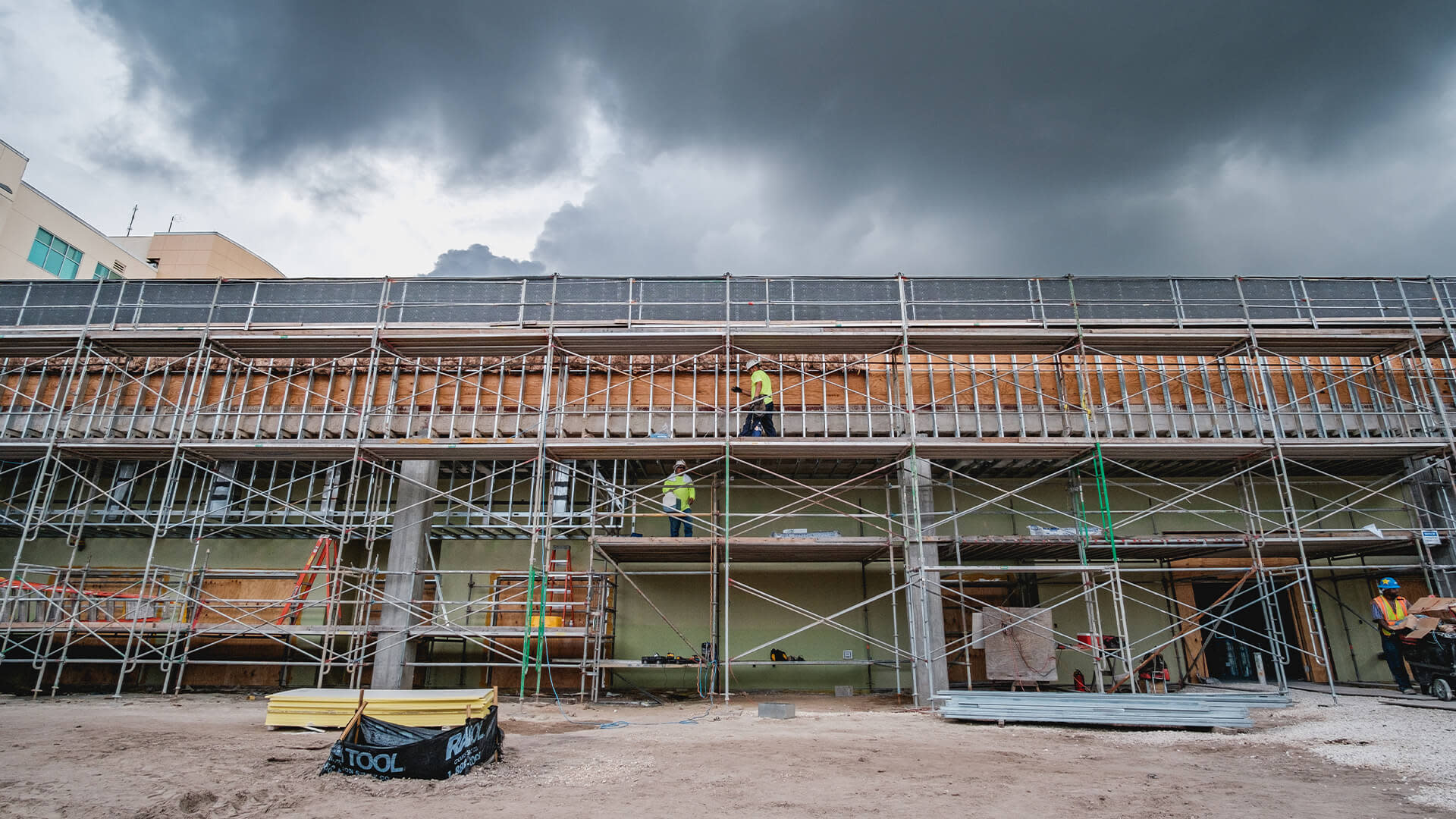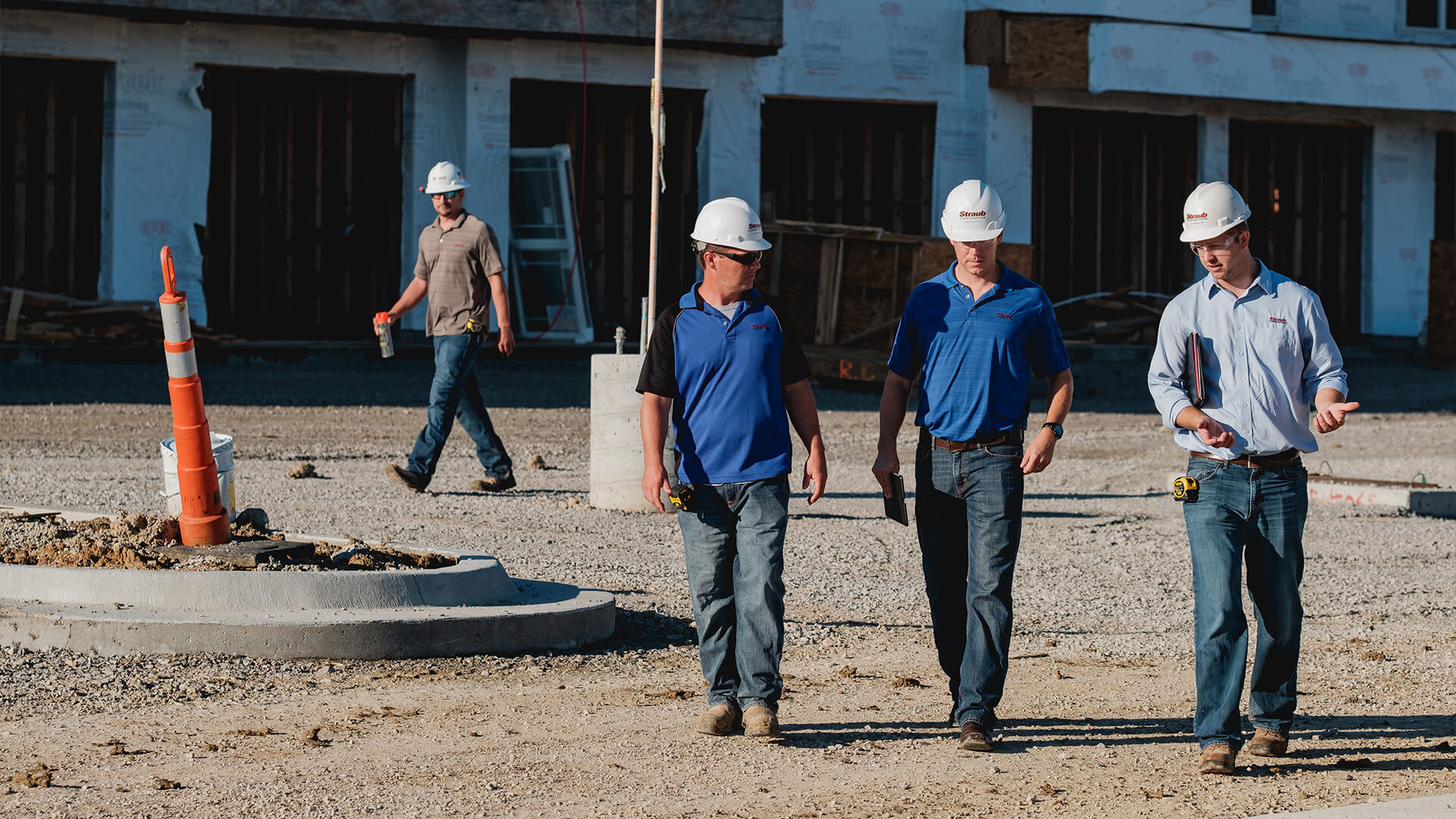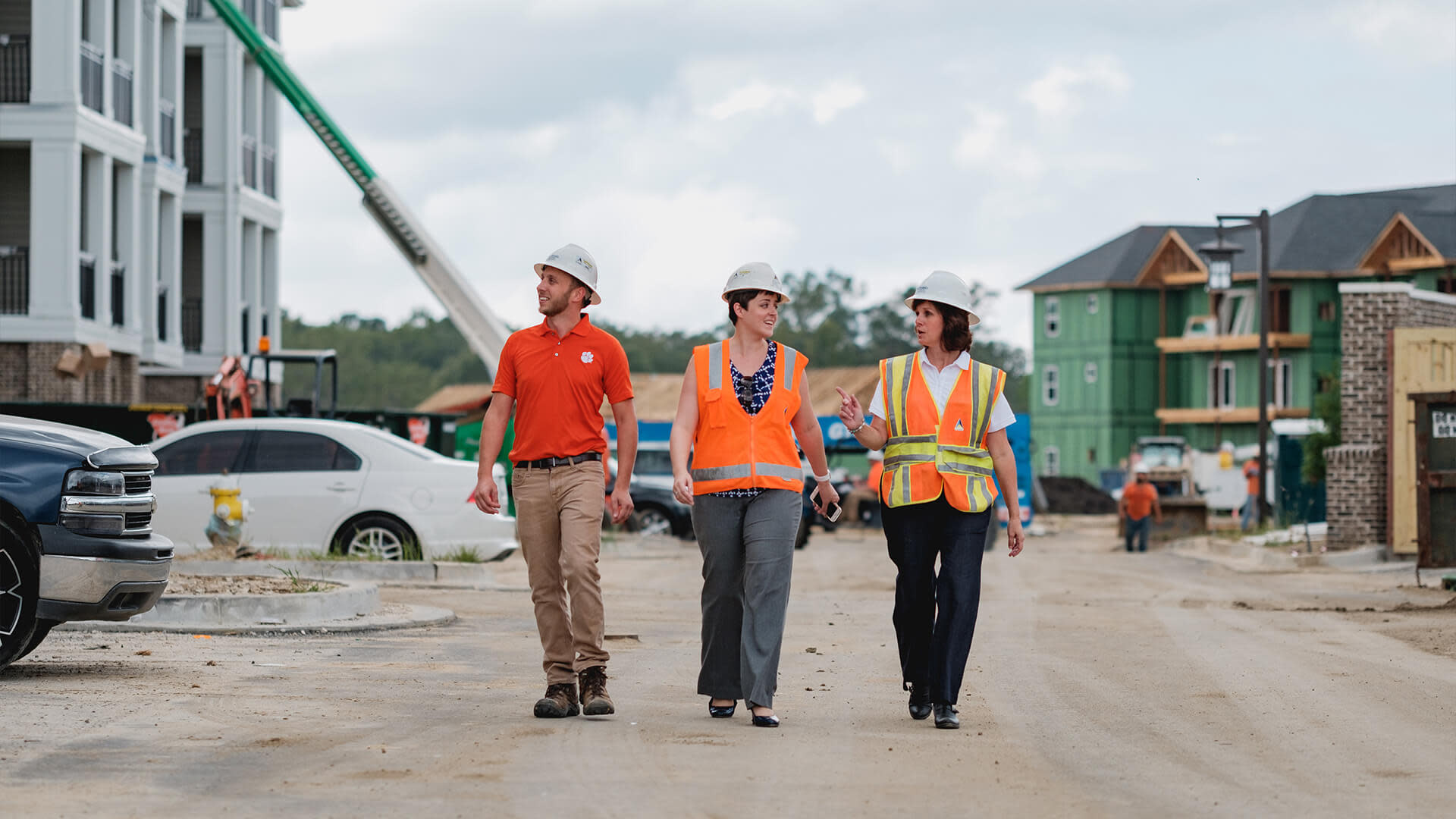
Article
What is Construction Workforce Management?
Learn what construction workforce management is and how it can benefit your organisation.
Want to learn more? We’re here to help
If you've ever been a part of a construction project, you know how crucial it is to have a well-managed workforce.
That's where construction workforce management comes in.
This guide answers the question, "What is construction workforce management?" and explains why it's critical to your project’s success.
Are you ready to improve project outcomes and boost your reputation in the industry? Let’s dive in.
Chapter 1
What Is Construction Workforce Management?
Construction workforce management (WFM) is the process of supervising workers on a project to ensure that it is completed on time, within budget, and to the desired level of quality.
Its goal is to ensure that your construction workforce is organised, trained, and utilised in the most efficient and effective manner possible. Construction WFM software helps your organisation maximise its team's potential, align workflows, and improve productivity by replacing fragmented processes and confused teams with a cohesive and streamlined workforce.
Typically, a construction project manager, head or tier 1 contractor, or subcontractor is responsible for managing the workforce. They handle various tasks such as identifying labour needs, planning, recruiting, and hiring workers, assigning project team roles, scheduling shifts, ensuring worker safety, providing training, and evaluating performance.
These tasks ensure that the right people work in the right places and have the necessary skills and tools to complete the construction project. Sometimes, larger construction projects have a dedicated workforce management team that is responsible for managing the labour force. The team includes human resources professionals, training specialists, and other support staff working closely with the construction manager to ensure that the workforce is managed effectively.
Overall, good workforce management keeps employees safe and motivated, which results in higher job satisfaction and retention rates.
Chapter 2
What Does Construction Workforce Management Entail?
Construction workforce management entails different activities related to managing the labour force on your project.
Its areas of focus include planning, recruitment, training, scheduling, performance evaluation, and compliance with relevant laws and regulations. Let’s explore three key areas.
Construction Workforce Planning
Construction workforce planning is the process of identifying, assessing, and managing the human resources required to complete a construction project successfully.
The goal of workforce planning is to ensure that the construction project is completed on time, within budget, and to the required quality standards, while also maximising the efficiency and productivity of the workforce.
Why Workforce Planning Is Important
Workforce planning is more important than ever in construction because it ensures that a project is staffed with the right number of workers with the right skills, which is essential to completing the project on time and within budget. It fills construction workforce management gaps, ensuring the right workers are hired, trained, and kept on the job until the project is finished.
Effective workforce planning monitors your team’s schedules, bandwidth, and job site capabilities. Managers need to balance these components to ensure that each project is well-staffed and that team members aren’t over- or under-allocated.
Workforce planning involves several key steps such as:
Defining the goals and objectives of the project—its scope, timeline, and budget.
Assessing the workforce needs, including identifying specific skills, expertise, and number of workers for each phase of the project.
Identifying potential labour shortages that could impact the project.
Developing a plan based on workforce needs and potential labour shortages.
Implementing the workforce plan in a systematic and organised way, including recruiting and training workers, managing their performance, and ensuring they have the resources and support needed to do their jobs effectively.
Monitoring and adjusting the plan as needed, including providing additional training or support to workers, or making changes to work processes or procedures based on feedback from workers or stakeholders.
Workforce planning is critical, particularly amidst issues like:
Seasonal Cycle Challenges
Construction work is highly seasonal in many regions, with work slowing down or coming to a halt during the winter months due to weather conditions. As a result, contractors let workers go as the work slows and then go on hiring sprees when the work returns.
Unfortunately, these workers may seek employment in other industries or locations, be unavailable when work resumes, or drop out of the workforce altogether to sell their services as craftspeople. As a result, you’ll struggle to maintain a stable workforce throughout the year.
Seasonal work makes it difficult to provide consistent and ongoing training and development opportunities for workers. This is especially challenging for new workers, as they only have a limited window of opportunity to gain the skills and experience needed to succeed in their roles.
Seasonal work also leads to productivity and efficiency challenges. Workers may need time to get up to speed at the beginning of each season and struggle to maintain momentum as work slows down during the offseason. Weather conditions also create safety and health challenges for workers, who may be exposed to extreme cold, ice, or other hazards. This increases the risk of accidents and injuries, which can significantly impact the workforce and the project.
Labour Shortages
Construction labour shortage occurs when there are insufficient workers to complete a project.
Australia’s construction industry was disrupted in 2020 due to the coronavirus pandemic. Before then, the industry saw a steady rise in employment that began in 2012 and was expected to reach around 1.26 million people. Unfortunately, things are expected to worsen before they improve as we move further into 2023, especially with the recession and the state of the global workforce.
As a result, the labour shortage can create several challenges for workforce planning:
Reduced productivity: A shortage of skilled workers can lead to reduced productivity on construction sites. This is because workers may be required to work longer hours or take on additional responsibilities, which can lead to fatigue and burnout.
Increased labour costs: When there is a shortage of workers, construction companies may need to offer higher wages or better benefits to attract and retain workers. This can increase labour costs, which can significantly impact the construction project's overall cost.
Delayed project timelines: A shortage of workers can also lead to delays in project timelines. This is because construction companies may not be able to hire enough workers to complete the project on time, or because workers may not have the necessary skills or experience to complete the work efficiently.
Quality issues: Quality issues can arise on construction sites when skilled workers are scarce. This is because workers may not have the necessary training or experience to complete the work to a high standard, which can lead to defects, errors, or other issues.
Limited Workforce Availability
Limited workforce availability occurs when there are not enough workers available to meet the demands of a project, even if there is no general labour shortage in the industry.
When workforce availability is limited, finding skilled workers with the necessary training and experience to complete the project becomes tough. This leads to delays in project timelines and increased costs. You’ll also have to offer higher wages or better benefits to attract and retain workers. This increases labour costs, which significantly impacts the overall cost of construction projects, and reduces flexibility in terms of scheduling and project management. Also, when there is limited workforce availability, workers work longer hours or take on additional responsibilities, which ultimately leads to burnout and turnover. This is particularly challenging for skilled workers who are in high demand in the industry.
Overall, proactive workforce planning and management ensures your project's success and your employees' well-being throughout the seasonal cycle.
To ensure project success and address these challenges, you should cross-train workers in multiple skills, provide ongoing training and development opportunities, offer incentives for workers to stay on during the offseason, partner with staffing agencies to find temporary workers, and use WFM software to increase productivity and efficiency.
Management of Construction Equipment
Equipment management plays an important role in construction workforce management. Construction equipment includes tools, machinery, vehicles, and other resources that are used on construction sites to perform various tasks. Effective management of construction equipment helps you optimise your workforce and improve the efficiency of your construction projects.
Some ways that equipment management impacts construction projects include:
Maximising Equipment Utilisation
Effective management of construction equipment helps you maximise the utilisation of your equipment. This enables you to complete more work with fewer workers, reduces the need for additional labour, and potentially lowers labour costs.
Improving Worker Productivity
Well-maintained and reliable construction equipment helps your workers perform tasks better. This increases their productivity and reduces the need for additional labour.
Enhancing Worker Safety
Safe construction equipment reduces the risk of accidents and injuries on construction sites. This improves worker safety and reduces the need for hiring workers to replace injured staff.
Reducing Downtime
Effective management of construction equipment minimises downtime caused by equipment breakdowns, repairs, and maintenance. This increases the efficiency of the construction project and reduces the need for additional labour to make up for lost time.
Enhancing Project Planning
You plan and allocate resources better, optimise your workforce, and make informed decisions about equipment rentals or purchases when you manage your equipment better.
When you care for your pieces of equipment better, you can improve the efficiency of your construction projects, reduce labour costs, improve worker productivity and safety, and enhance project planning and execution.
Field Productivity Management
Field productivity management plays a crucial role in construction workforce management. It involves monitoring, analysing, and optimising the productivity of workers in the field.
Effective field productivity management helps construction managers to make informed decisions about workforce allocation, scheduling, and resource planning.
Here are some ways field productivity management impacts workforce management:
Resource Allocation
Field productivity management helps construction managers identify areas where resources are over or under-allocated. This helps you optimise resources and reduce labour costs.
Schedule Optimisation
Monitoring field productivity allows you to identify areas where work takes longer than expected. This helps you adjust schedules, allocate resources more effectively, and reduce the need for additional labour.
Performance Measurement
Field productivity management helps construction managers measure the performance of workers in the field. This allows you to identify areas where workers need additional training or support and improve worker productivity.
Safety Management
Field productivity management can also help to improve worker safety by identifying potential hazards and implementing measures to mitigate them. This can reduce the risk of accidents and injuries on construction sites, reducing the need for additional labour to replace injured workers.
Quality Control
Field productivity management also helps improve your projects' quality. By tracking performance metrics, you can ensure that work is being done to the required standard and reduce errors.
Overall, improving field employee productivity helps construction managers optimise their workforce and reduce labour costs.
Here are some tips on how to improve site employee productivity:
Provide proper training to ensure that employees have the necessary skills and knowledge to perform their tasks efficiently. This reduces errors and rework.
Set clear goals so field employees understand what is expected of them and how you measure their performance. This motivates them to work and it boosts productivity.
Use construction WFM software to streamline communication and collaboration among field employees. This helps reduce delays and improve productivity.
Regularly monitor the performance of site employees to identify potential areas of improvement. This optimises workforce allocation and reduces labour costs.
Provide incentives such as bonuses or rewards for meeting or exceeding performance goals to motivate field employees to work more efficiently and effectively.
Provide proper equipment to help site employees to perform their tasks better, reduce the risk of injuries, and improve productivity.
Implement safety measures such as providing proper safety equipment and training to reduce the risk of accidents and injuries on construction sites. This reduces the need for additional labour to replace injured workers and improves productivity.
These strategies help you improve the productivity of your site employees, optimise your workforce, and reduce labour costs.
Chapter 3
The Other Benefits of Construction Workforce Management
Increase Profits by Better Managing Your Construction Labour
Putting together a team for a construction project can be costly.
This is because the project typically requires a wide range of skilled professionals, such as engineers, project managers, construction workers, and other specialists who command high salaries and fees.
Construction WFM software helps you forecast personnel needs and schedule workers more efficiently, ensuring enough workers are on the job site when needed. This helps avoid delays, complete projects on time, avoid wasting resources, and make tasks easier.
Overall, better construction workforce management helps you increase profits by lowering costs, increasing productivity, creating a more positive work environment, and improving your construction workforce's overall experience.
Increase Your Overall Workforce Productivity
When your workforce is more productive, you can get more done with the same resources. It's much easier to simplify tasks, reduce time spent on them, and eliminate time-consuming paperwork and red tape. This significantly increases daily task completion and improves profitability by delivering projects more efficiently and lowering labour/material costs.
Higher productivity also allows you to avoid costly delays and meet project deadlines. When the workforce is more productive, everyone can focus on delivering quality work. This reduces repeat work and improves overall project quality. It also increases their engagement and motivation, resulting in higher morale, job satisfaction, and a more positive work environment.
Improve Compliance
Improving labour law compliance is a smart business strategy to help you stay competitive and achieve long-term success. This includes adhering to regulations, implementing policies and procedures, providing training and education, and conducting regular audits and inspections.
Maintaining your company's compliance with the most recent labour law changes also allows you to adapt to new regulations quickly. Compliance also eliminates human error while managing employee absence, break, vacation, and leave. As a result, your business will be able to operate more efficiently and effectively, with less risk of compliance issues. You avoid costly fines and penalties while maintaining a positive reputation among your employees and the general public.
When you stay ahead of the compliance curve, you ensure your construction workforce is safe, efficient, and compliant. This improves transparency and accountability, fosters trust among clients, partners, and stakeholders, optimises processes and procedures to achieve better results, and lowers risk for your company and its employees.
Chapter 4
Why You Should Consider Using Construction Workforce Management Software
Construction workforce management software is valuable for construction companies looking to streamline their operations and improve their overall efficiency.
The software automates routine tasks and provides real-time insights to help you manage your workforce and ensure projects are completed on time, on budget, and to the required quality standards. As a result, you can save time and money, improve collaboration, increase productivity, make better decisions, stay ahead of the competition, and achieve better project results.


